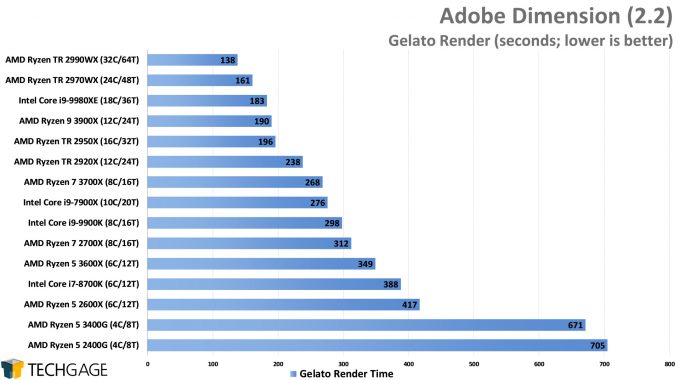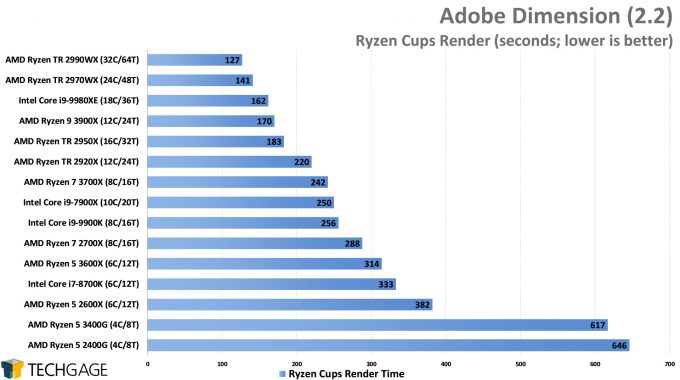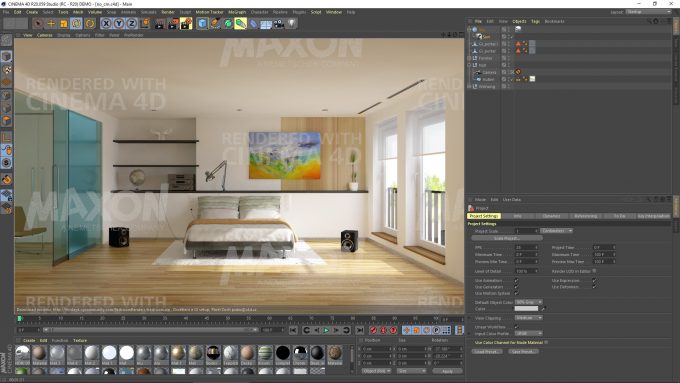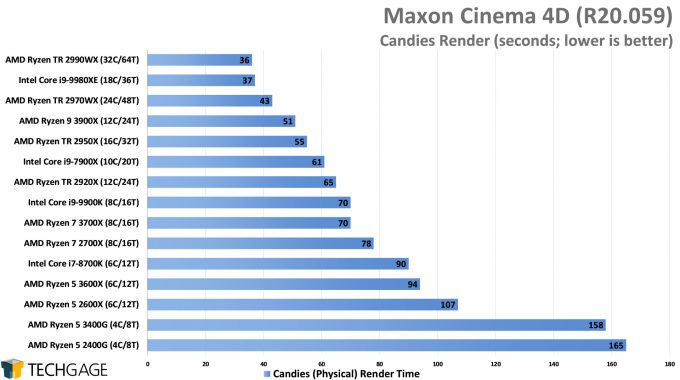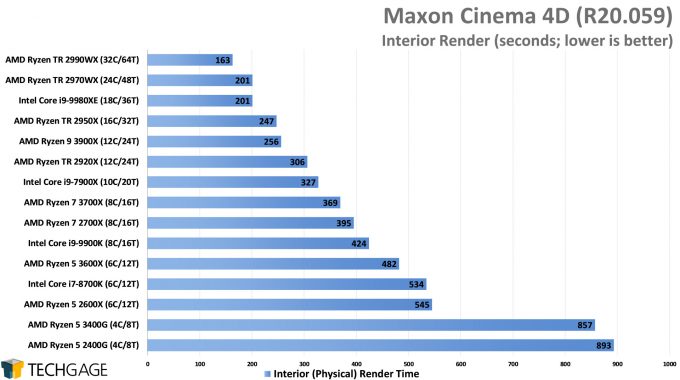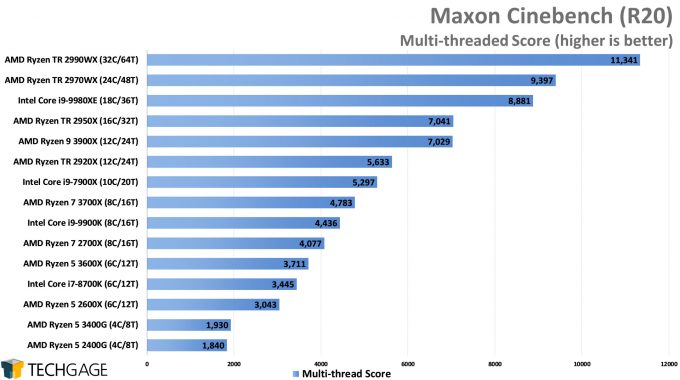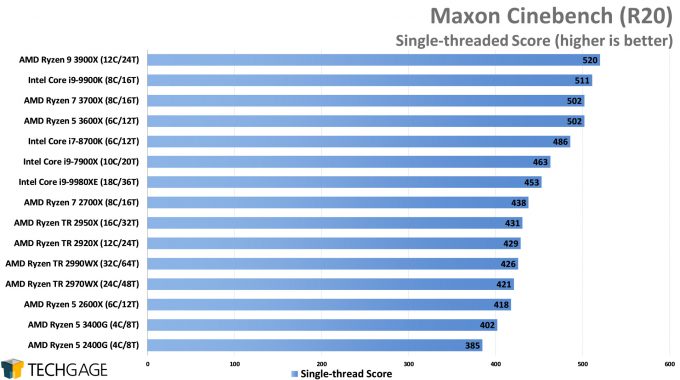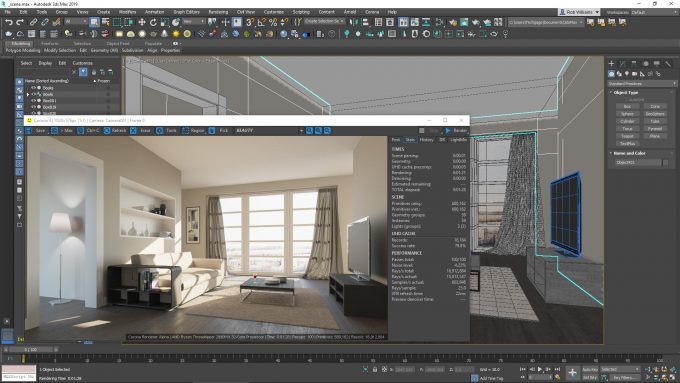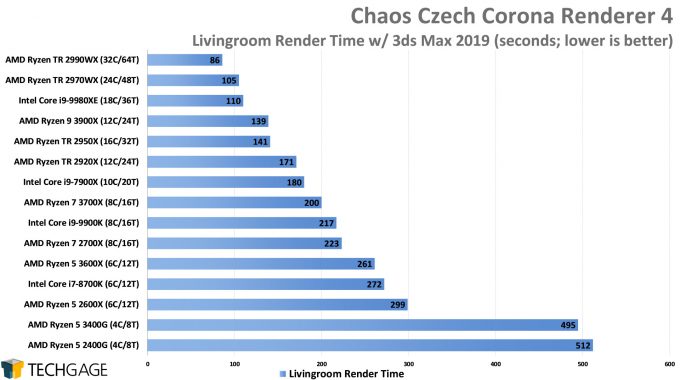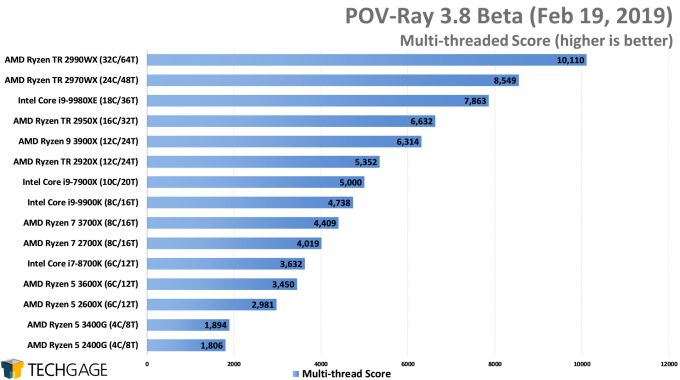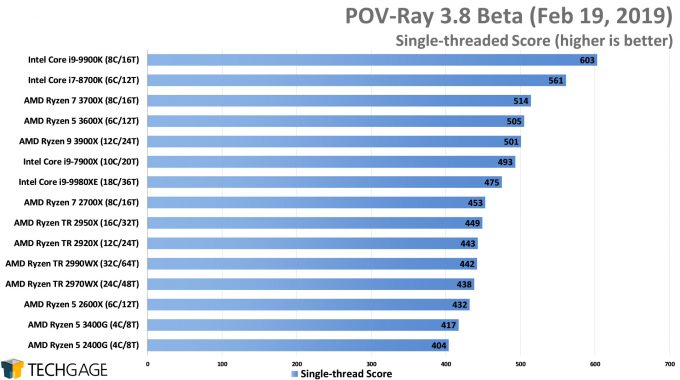- Qualcomm Launches Snapdragon 4 Gen 2 Mobile Platform
- AMD Launches Ryzen PRO 7000 Series Mobile & Desktop Platform
- Intel Launches Sleek Single-Slot Arc Pro A60 Workstation Graphics Card
- NVIDIA Announces Latest Ada Lovelace Additions: GeForce RTX 4060 Ti & RTX 4060
- Maxon Redshift With AMD Radeon GPU Rendering Support Now Available
AMD Ryzen 5 3600X & Ryzen 5 3400G CPU Performance Review

Having taken a look at Linux performance with AMD’s Ryzen 5 6-core 3600X and 4-core 3400G last week, we’re now turning our attention to Windows. We’re tackling everything from encoding to rendering and math to gaming with the ultimate goal of finding out how these chips stack up, and see where the greatest strengths lay.
Page 5 – Rendering: Adobe Dimension, Cinebench, Cinema 4D, Corona, POV-Ray
We covered a handful of major renderers on the previous page, but we’re not done yet. On this page, we’re going to take a look at a few more, including some industry mainstays and newbies. Adobe’s Dimension is the newest renderer to our testing fleet, which yet again joins Corona Renderer, which joined the fun about a year ago.
To give you an opportunity to test your own hardware against ours, we’re also including the ever-popular Cinebench standalone benchmark, which represents current R20 performance. This test, along with the latest version of POV-Ray, act as our only single-threaded angles in the article. For good measure, the performance on this page will be capped off the real Cinema 4D, to see how it agrees with CB.
Adobe Dimension
We’re beginning this page with similar performance scaling as seen on the previous pages, with cores mattering a lot more than clock speeds here. We’d imagine that if Intel’s 28-core part were more customer-friendly, it’d go toe-to-toe with the 2990WX well here. Alas, we say that at a time when we know more Threadrippers are en route, and AMD is pretty core-happy, so we could see a fabled 64-core part for real at some point.
It’s funny to talk of such many-core chips when looking at the bottom G chips, though. It’s almost unfair to look at these chips in this kind of context, because even the six-core models will easily obliterate their performance. Again, though, half of the appeal of an APU is its inclusion of graphics, so you win and lose battles with the G series depending on what you’re after. It’s interesting to think of how a 6- or 8-core APU would fare in tests like these, especially if the IGP could be engaged a little bit.
Cinema 4D & Cinebench
Again proving that not all workloads are built alike, we see varying scaling between these two tested projects, but neither to a real significant degree anywhere. In the simpler Candies test, the 18-core Intel chip keeps right up to the 32-core chip. In the same test, the 8700K pulls ahead of the 3600X, but the roles reverse in the Interior scene.
With Cinema 4D R21 having been released a couple of weeks ago, we’re investigating upgrading to it for our next suite revision, which is coming soon.
Of course, Cinema 4D has a standalone benchmark that represents its overall performance fairly accurately, so let’s see how placements fare there:
Because we’ve already tested multi-threaded performance with our real-world renders, it’s arguably the single-threaded test in Cinebench that’s most interesting here. No one is rendering to a single core, but this test does give us a bit of insight into which processors are faster at quick single-threaded tasks. Normally, Intel easily dominates this particular chart, but that was until AMD’s Zen 2 came into the picture and spiced things up.
One thing both of these Cinebench graphs highlight is that the G chips are definitely not going to offer much breathing-room at the bottom end, making them better-suited for more basic or HTPC-type use. It’s hard to ignore the differences seen from a chip like the 3600X to 3400G – a full 20% drop. Granted, this is only a single test, so it can only be weighed so heavily.
Corona Renderer
If AMD’s Zen 2 chips didn’t exist, it’d be so much easier for Intel to shine. In this test, and many other rendering tests, the 8-core 3700X beats out the 9900K and the 6-core 3600X beats out the 8700K. That said, the last comparison is quite close, so it seems certain that the 9700K would at least match the performance of the 3600X in this test.
POV-Ray
As a bit of a second opinion to Cinebench, we use POV-Ray for a more neutral (as far as we know) look at rendering. The scaling here aligns a lot more to our expectations, with the single-threaded tests putting Intel on top, but multi-threaded doing the same for AMD. It’s interesting that in the single-threaded test, even the huge Threadrippers outscore the quad-core APUs. Just imagine if the 3400G was built around Zen 2. We really want to see that chip yesterday.
Support our efforts! With ad revenue at an all-time low for written websites, we're relying more than ever on reader support to help us continue putting so much effort into this type of content. You can support us by becoming a Patron, or by using our Amazon shopping affiliate links listed through our articles. Thanks for your support!





